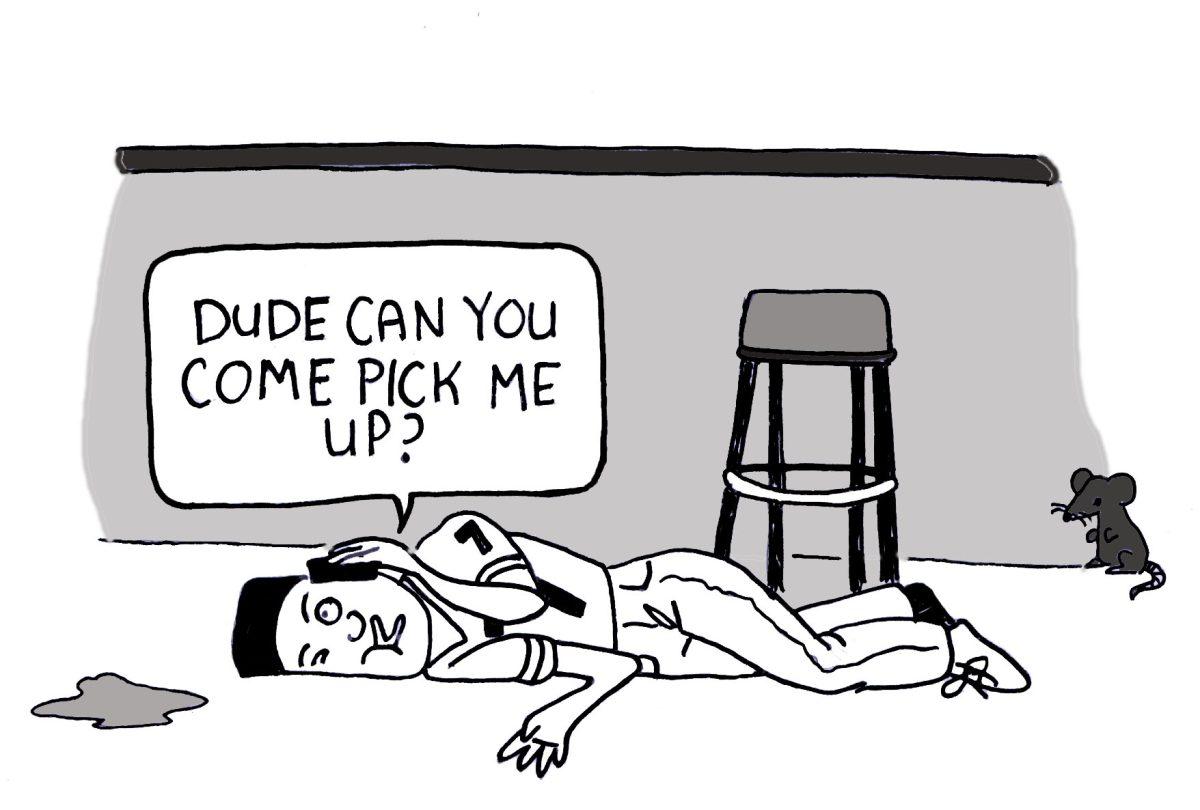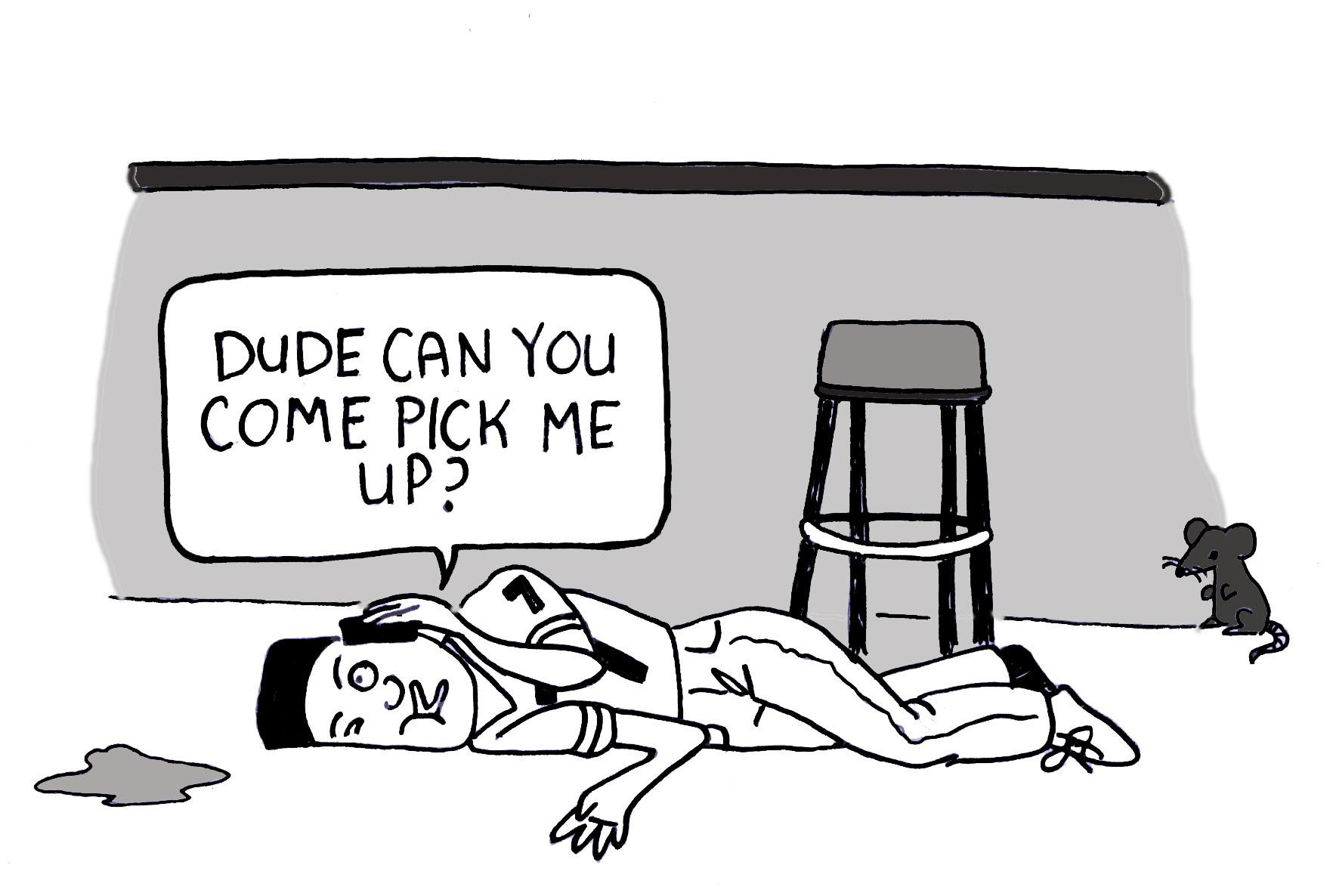It’s no secret drinking is a major part of the college experience. The National Institute on Alcohol Abuse and Alcoholism estimates about four out of five college students consume alcohol, and of those that do, at least half binge drink.
So while college is considered by many as the time to “go crazy” and have fun, it’s also one of the most dangerous periods of life, especially when one gets behind the wheel of a car intoxicated.
According to the National Highway Traffic Safety Administration, 28 people in the United States die every day as a result of drunk driving. These deaths are preventable if those involved were to choose an alternative mode of transportation. When planning to go out and drink, it’s important to have a designated driver so everyone gets home safely.
However, being the “DD” entails abstaining from alcohol for the entirety of the evening—and not everyone is willing to do that.
Some people think as long as they stay below the legal limit—blood alcohol content .08—everything will be fine. However, the National Highway Traffic Safety studies show even a single drink can affect motor skills and brain function.
Furthermore, California driving under the influence laws stipulates even drivers with a blood alcohol content lower than the legal limit can still be issued a DUI. The number appearing on the Breathalyzer isn’t the only thing that matters—it’s how the person in question responds to mental and motor skills tests administered by the police.
Another common misconception is after drinking one can “sober up” by eating, drinking coffee or taking a cold shower. None of these “remedies” work.
The University of Wisconsin-Stout Counseling Center reports eating after consuming alcohol won’t induce sobriety because food can’t stop alcohol from entering the bloodstream; and eating a large meal before drinking will only delay the effects for a short time.
Caffeine and cold showers are just as useless because the liver metabolizes alcohol at its own pace, regardless of actions taken to prevent it. The only thing that can make one sober is time.
However, if nobody in one’s party wants to commit to being the sober chauffeur for a night, there are other safe alternatives to driving under the influence.
How about cars with pink moustaches? Lyft is a new taxi-like system where people can sign up as “on-call” drivers and pick others up who request rides on the app. All drivers are subject to background checks, and riders can rate their experience with them.
The app requires users to enter credit card information so drivers receive automatic payment upon reaching the final destination.
There are also traditional taxis, but some students are hesitant to use them because they can get a bit pricey. Sam’s Taxi charges approximately $3 a mile, traveling from M Section to the Cotati Crawl would cost about $10 each way, and even more if the point of pickup is in a neighborhood farther away from the bars.
Students can always opt to split the fare when travelling in groups, but if the rates are still too steep, they can purchase “Save a Seawolf” vouchers at the University Box Office in the Student Center. Each voucher costs $5 and covers $15 worth of taxi fare for a one-way trip in the Rohnert Park/Cotati area.
With the number of options available for students to choose from, there’s really no excuse for driving under the influence. Drinking is a common part of college culture, but irresponsible drinking doesn’t have to be. It’s everyone’s responsibility to plan ahead and make sure they have a safe ride home.
Actions have consequences, and Seawolves owe it to themselves to make sure they graduate from Sonoma State University in one piece.
If one is suffering from alcohol abuse, there are campus resources available. Counseling and Psychological Services offer sessions and wellness workshops for those suffering from substance abuse, and they can refer students to appropriate local resources such as the Sonoma County Department of Health Services in Santa Rosa and Alcoholics Anonymous.
Students living on campus are also encouraged to talk to their Residential Life staff regarding these issues.





![[Both photos courtesy of sonoma.edu]
Ming-Ting Mike Lee stepped in as the new SSU president following Sakakis resignation in July 2022](https://sonomastatestar.com/wp-content/uploads/2024/04/CC4520AB-22A7-41B2-9F6F-2A2D5F76A28C-1200x1200.jpeg)



























